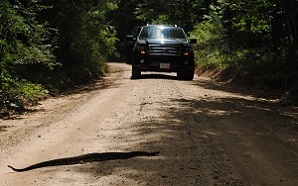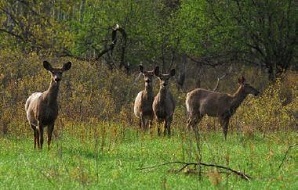Wildlife, Fish & Marine Life Newsletter
The New York State Department of Environmental Conservation sent this bulletin on 07/16/2019 12:49 PM EDT |
| DEC Delivers - Information to keep you connected and informed from the NYS Department of Environmental Conservation |
| Share or view as a web page || Update preferences or unsubscribe |
Wildlife, Fish, and Marine Life Newsletter |
Shark Fishing in New York’s Marine Waters
NOAA Fisheries has increased the recreational minimum size limit for shortfin mako shark caught in federal waters (3 - 200 miles offshore) to 71 inches (fork length) for male sharks, and 83 inches (fork length) for female sharks. Please remember, sharks with an interdorsal ridge (which is a visible line of raised skin between the two dorsal fins) are known as ridgeback sharks. All ridgeback sharks (except the tiger, oceanic whitetip, and smoothhound) are prohibited to target and possess. Dusky and sandbar (brown) sharks are commonly found ridgebacks that are prohibited from taking. Visit DEC’s website to learn more about local shark species. If you catch a prohibited shark, please remember the following best practices:
Tagging sharks as a volunteer does not make you exempt from state regulations. Special licenses are required for individuals to collect and tag prohibited species. Photo: Shortfin mako by Justin Pellegrino. 139-Pound Sturgeon Caught in Oneida Lake is Largest Since Stocking Began
This large sturgeon, estimated to be 20 years old, was one of 11 caught in a single day earlier this summer. Once captured, biologists sedated the sturgeon, measured and weighed the fish, took samples to determine age, tagged it, and allowed the fish to recover before releasing it back into the lake. DEC began stocking lake sturgeon in Oneida Lake in 1995 to reverse past devastating losses due to overfishing and damming of rivers, which are critical spawning habitats. Since then, DEC has stocked almost 11,000 sturgeon in Oneida Lake. Before the stocking program began, the lake sturgeon population throughout the Great Lakes region was estimated at one percent of historic levels. DEC's lake sturgeon recovery program has made great progress statewide. Anglers are now more likely to encounter lake sturgeon while fishing. Anglers should remember that there is no open season for lake sturgeon and possession is prohibited. Any lake sturgeon caught accidentally must be immediately released without harm. If anglers see a sturgeon bearing a yellow dangler tag on the dorsal (top) fin, they should make note of the number without removing the tag and contact the nearest DEC regional office. Any sightings of lake sturgeon are of interest to DEC and research partners. For more information on the Lake Sturgeon Recovery Plan, view the Lake Sturgeon Recovery Plan (PDF). Why Did the Snake Cross the Road?
Photo by William Hoffman. The Application Deadline for the Deer Management Assistance Program is August 1
DMAP permittees receive antlerless deer harvest tags that they can distribute to licensed hunters of their choice for use on the property where they are experiencing problems. The tags can be used only during open deer hunting seasons. To see the eligibility requirements for DMAP or to download an application form, visit the DMAP webpage. Applications for this fall must be submitted to your regional DEC office by August 1. Photo by Dick Thomas. |

 Shark Week 2019 is almost here and New York's marine waters provide important habitat to many shark species! Before
Shark Week 2019 is almost here and New York's marine waters provide important habitat to many shark species! Before  Fisheries researchers working under a DEC-funded contract at Cornell University's Biological Field Station at Shackleton Point recently
Fisheries researchers working under a DEC-funded contract at Cornell University's Biological Field Station at Shackleton Point recently 
 Landowners who are experiencing damage from deer may wish to consider applying for extra harvest tags through our Deer Management Assistance Program (DMAP). DMAP helps qualifying landowners and resource managers implement site-specific deer management on their lands to address crop damage or forest regeneration problems, protect areas of sensitive and rare plants, or conduct custom deer management programs. It can also be used by municipalities to reduce deer-related problems in residential communities.
Landowners who are experiencing damage from deer may wish to consider applying for extra harvest tags through our Deer Management Assistance Program (DMAP). DMAP helps qualifying landowners and resource managers implement site-specific deer management on their lands to address crop damage or forest regeneration problems, protect areas of sensitive and rare plants, or conduct custom deer management programs. It can also be used by municipalities to reduce deer-related problems in residential communities.